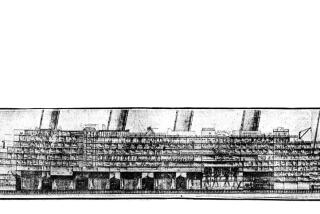What goes around
If scarves have a downside, it’s their trailing ends. Short scarves unhook and need rearranging; longer scarves want to drag behind, drop suddenly into a mug of cocoa, get caught in the ordinary machinery of your day. Think Isadora Duncan.
But sew the ends of a knit scarf together and you have the problem solved -- and the scarf pretty much perfected. It’s one of those ideas that seems so obvious you’d think someone surely discovered it a long, long time ago. Like about the time they invented scarves.
At Goat Boutique in Costa Mesa, co-owner Matthew Thomas started stocking Ever’s connected scarves almost three months ago. The scarves, made by Orange County native Jason Bleick’s 4-year-old company, quickly sold out. With customers clamoring for more -- and the holiday season on the way -- Thomas’ grandmother offered to make them herself.
“She started counting the stitches and said, ‘Oh, I can make this,’ ” Thomas says of his grandmother Verba Gore, a self-taught knitter.
Gore, whose age her grandson declined to give (“She’d kill me if I told you”), uses wool or cashmere, in solid colors or multicolored yarn that knits up in beautiful variegated stripes. Thomas sells the pieces for $110 to $150.
A quick look at one of the gorgeous scarves and you can see why Gore decided to make them herself: They are just a simple rib stitch, 5 1/2 feet of it, with no intarsia or cables. You barely need a pattern. In one color, on size 10 needles, you can knit the scarf in a long afternoon of movie watching. Then, when you’re finished knitting, simply fold the long scarf in half, twist it once (this lets it hang nicely) and sew up the ends.
The scarf is enormously fun to wear too. Wind it around twice and you have a terrific loose fit in the first loop, with the second forming a pretty cowl. Hook it three times for a thick fit at your neck; or let it fall down your back in a single, irreverent loop. Or get a little creative: Pull one loop over your head or wind it under your shoulder.
Go all-black in a luscious cashmere, or work a sportier scarf by pairing a pearl gray Peruvian wool with a skein of scarlet. As long as you get the gauge right, you can knit this scarf out of just about any yarn.
And with no ends to worry about, it’s a scarf you can wear safely in your convertible.
--
--
(BEGIN TEXT OF INFOBOX)
How to make a connected scarf
Time: About 6 1/2 hours
Measurements: 64 inches by 4 1/2 inches, ribbed
Materials: Three skeins of cashmere or soft wool yarn (such as Cascade Pastaza, 50% llama, 50% wool), about 132 yards each or 300 grams total (2 skeins of gray and 1 skein of red, or colors of your choice); matching thread.
Needles: U.S. size 10 knitting needles; yarn needle; sewing needle
Gauge: 5 stitches and 5 rows equal 1 inch
1. With size 10 needles, cast on 45 stitches in gray, the main color.
2. Row 1 (RS) k3, p3; repeat in this pattern until the end of the row.
3. Row 2 (WS) p3, k3; repeat in this pattern until the end of the row.
4. Continue ribbing until the scarf measures about 32 inches. On a RS, switch to the red yarn and continue knitting in rib pattern in the secondary color until you have about 24 inches of red (this should be about the end of the skein). End after a RS row.
5. Switch back to gray, and continue knitting in rib pattern until the whole scarf measures 64 inches. Bind off in pattern on a RS row. Using a yarn needle, weave in the loose ends, making sure that the colored ends are woven into their same-colored pieces of scarf.
6. Spread out the scarf, fold it in half and twist one piece of the scarf once. Pin or hold the two ends together so that the pattern matches up: The knits will meet the purls, the purls the knits.
7. Using a sewing needle and thread that matches the gray, or main yarn color, sew together the ends of the scarf using a basic whipstitch.
--
Note: For a solid scarf, knit the whole scarf in one color; or use more colors for more stripes; you can also knit this pattern with tweed or multicolored yarns of varying textures, just check the gauge.

